Price reductions at Crocus
by Sarah - February 27th, 2010.Filed under: Crocus, Price Reductions.
Reduced price on items today at Crocus
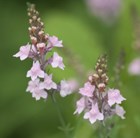
toadflax was £3.99 now £2.99
Position: full sunSoil: moderately, light, well-drained, preferably sandy soilRate of growth: averageFlowering period: June to SeptemberFlower colour: pale pinkHardiness: fully hardyLonger, slender spires of pale pink flowers are produced from early summer through to early autumn above the slivery-grey foliage. A good plant for vertical interest in a mixed border though it will look as equally at home in a gravel garden, where it will cope well with dry, sunny conditions. It readily self-seeds but the seedlings are rarely the same as the parent. Garden care: Dead-head regularly if you dont want seedlings popping up.
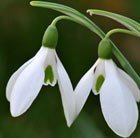
snowdrop – In The Green was £3.99 now £3.49
Position:partial shadeSoil: humus-rich, moisture-retentive soilRate of growth: fast-growingFlowering period: January and FebruaryFlower colour: pure whiteOther features: all parts of the plant may cause a mild stomach upset if ingested; contact with the bulbs may cause skin irritationHardiness: fully hardySnowdrop bulbs bought in the autumn tend to get dehydrated and this can lead to disappointing results. This is why planting bulbs ‘in the green’ is becoming more and more popular. Snowdrops are perfect for naturalising in grass and each pot will have at least 4 shooting bulbs in it. Plant in well-drained, moisture-retentive soil.Garden care: Plant pots in naturalistic drifts when they arrive. Where bulbs are planted in grass do not cut the grass until after the leaves have died back. Divide large colonies immediately after flowering while the leaves are still green.
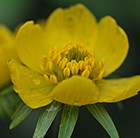
winter aconite – In The Green was £3.99 now £3.49
Position: full sun and partial shadeSoil: fertile, humus-rich, neutral to alkaline soilRate of growth: average to fast-growingFlowering period: February and MarchFlower colour: bright yellowOther features: ruffs of fresh green leavesHardiness: fully hardyCarpets of bright yellow, buttercup-like flowers in February and March surrounded by ruffs of fresh green leaves. Winter aconities are perfect for naturalising in the border under deciduous shrubs and trees. For the best results plant the pots in a sunny or partly shady site with fertile, humus-rich soil that remains moist in summer.Garden care: Plant pots in naturalistic drifts 10cm (4in) on arrival.
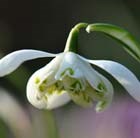
double snowdrop – In The Green was £4.49 now £3.99
Position: partial shadeSoil: humus-rich, moist, well-drained soilRate of growth: fast-growingFlowering period: January and FebruaryFlower colour: pure whiteOther features: all parts of the plant may cause a mild stomach upset if ingested; contact with the bulbs may cause skin irritationHardiness: fully hardyDainty, double, pure white, pear-shaped flowers with green-tipped inner petals in January and February and narrow, grey-green leaves. These delightful double snowdrops are ideal for naturalising in the border under deciduous trees and shrubs. Plant the pots as soon as possible after purchase in well-drained, moisture-retentive, humus-rich soil.Garden care: Plant pots in naturalistic drifts 10cm (4in) on arrival. Where pots of bulbs are planted in grass do not cut the grass until after the leaves have died back.
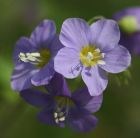
Jacobs ladder was £6.99 now £4.49
Position: full sun or partial shadeSoil: fertile, moist, well-drained soilRate of growth: averageFlowering period: May and JuneHardiness: fully hardyJacob’s Ladder gets its name from the arrangement of its leaves pairs of opposite leaflets resembling a ladder. In early summer, erect stems rise up from the bright green foliage, carrying clusters of large, bell-shaped, mauve flowers with contrasting pale orange anthers. A cottage-garden favourite, Jacob’s Ladder is happiest in partial shade, and looks equally at home ina wildlife garden setting or in grass. Although it is short-lived, it self seeds freely.Garden care: Cut the plant back after flowering to encourage a second flush of flowers. In autumn, cut the faded flowerheads down to the ground and compost the dead stems.
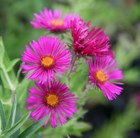
michalmas daisy was £5.99 now £4.49
Position: full sun or partial shadeSoil: well-cultivated, fertile, moist soilRate of growth: averageFlowering period: August to OctoberFlower colour: redOther features: lance-shaped, mid-green leavesHardiness: fully hardyA brilliant plant for adding much needed late colour to the garden as the large, light red flowerheads appear on top of stiff upright sprays from late August to October. It will flourish in full sun or light dappled shade and will look good in herbaceous borders or prairie style planting.Garden care: Stake with bamboo canes or brushwood in early spring. Water regularly during dry spells and deadhead regularly to prolong flowering. After flowering cut the flowered stems to the ground and apply a generous mulch of well-rotted garden compost or horse manure around the base of the plant.Asters are one of the easiest plants to take cuttings from. All you need to do is pull away sideshoots that have already rooted. These can then be potted up individually or planted directly in to the garden.
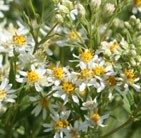
flat-topped aster was £5.99 now £4.49
Position: full sun or light shadeSoil: most well drained soilsRate of growth: averageFlowering period: August to OctoberHardiness: fully hardyPretty white flowers, tinged purple, with yellow centres appear from the end of summer to autumn. The flowers are produced in flattish clusters, hence the common name ‘flat-topped aster’. They are one of the earliest asters into flower and each individual flower has petals which tend to curve downwards. A great plant that produces clumps of mildew resistant foliage and easy-to-pick flowers. Butterflies love them too.Garden care: Stake with brushwood in early spring to support tall growth. Leave flower heads to dessicate through the winter when they will present an attractive garden silhouette. Also a rich source of food for some or our native birds. Apply a generous mulch of well-rotted garden compost or horse manure around the base of the plant in spring to encourage new growth.

daisy was £5.49 now £4.49
Position: full sun to partial shadeSoil: moist, fertile, well drainedRate of growth: averageFlowering period: September to NovemberHardiness: fully hardyA really cheerful pure white daisy with a lemon-yellow centre. From early autumn to the first frosts, large flowers, up to 7cm (3in) across, open on strong, upright stems that don’t need staking. In reliably moist soil, this plant will form large clumps, but is rarely invasive. A star in the middle of an herbaceous border or damp meadow, it looks great among ornamental grasses and late-flowering perennials, particularly heleniums. Butterflies and bees love it, too. Garden care: Before planting incorporate plenty of well-rotted manure or garden compost into the soil. Cut down to the ground in late winter.
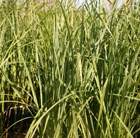
bottle sedge was £4.99 now £4.49
Position: full sun or partial shadeSoil: fertile, moist or wet soilRate of growth: averageFlowering period: June to JulyHardiness: fully hardyA native of lake margins, swamps and boggy ditches, this is an easy to grow sedge, which will flourish in damp to wet soil in full sun or part shade. It is one of the taller water sedges and a remarkably robust plant. It produces an attractive flowerspike in mid summer which looks a little like a miniature bottlebrush. The mid green leaves can often have a bluish tinge to them and they are rarely eaten by hungry deer.Garden care: Cut brittle, dead foliage right down to the ground in late winter, before new growth appears.
lesser catmint was £4.99 now £4.49
catmint was £4.99 now £4.49
small scabious was £5.99 now £4.99
oregano was £9.99 now £5.99
rodgersia was £6.99 now £5.99
masterwort was £6.49 now £5.99
culver’s root was £6.99 now £6.49
oriental poppy was £6.99 now £6.49
feathertop was £7.99 now £6.99
dahlia was £14.99 now £7.49
Plus…
13 products from Garden | shrub
6 products from Garden | perennial
1 products from Garden | climber
1 products from Garden | aquatic






